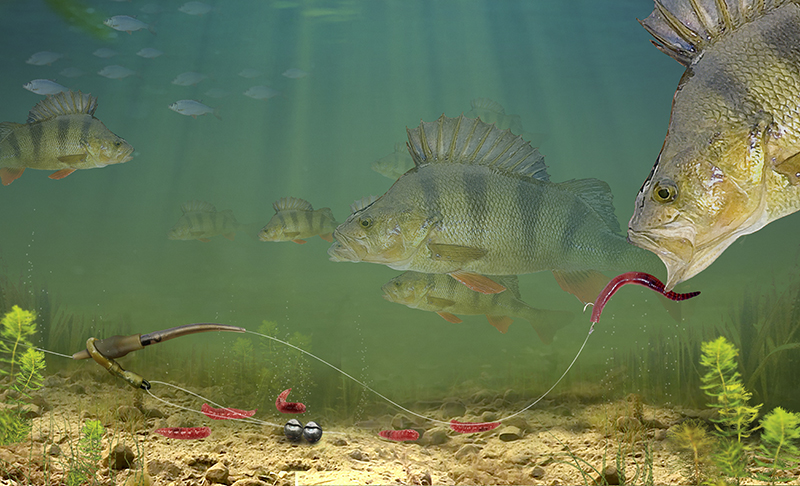Fishing Rig Guide | River perch rig
Legering is often seen as a lazy tactic. The perception is that the baited rig is cast out, the rod placed on the rest and it’s then a matter of hoping for the best. But Rob’s leger tactics are much more active. He is constantly working the rig to try and gain a response from any hungry predators.
“Perch will always choose to attack a bait that is wriggling and that explains why worms work so well for them.
“At this time of year there is likely to be a lot of debris on the bottom as a result of the trees dropping their leaves, and your hookbait can easily get lost among all of this.
“In order to make sure the hookbait stands out, I like to twitch it along the bottom at regular intervals. If I don’t get any indications within a couple of minutes, I will twitch the rig a couple of inches.
“You’d be surprised how many bites come immediately after doing it. It proves that more often not there are perch sat in the swim but they might not even be able to see your hookbait.”
A heavy feeder on the bottom is difficult to twitch and will look unnatural and spook fish when it suddenly jolts, so Rob prefers to use a link leger. If that isn’t possible in the conditions he will use the smallest maggot feeder that will continue to hold the bottom.
How to tie a running link leger rig
1) Thread the large bore running ring and clip on to your mainline
2) This is then followed by the angled buffer bead
3) Tie the swivel supplied with the Running Rig Kit to the mainline
4) Thread the anti-tangle sleeve on to your hooklink and tie to swivel
5) Push the anti-tangle sleeve over the eye of the swivel
6) Tie on a Korum Xpert Specialist hook using a palomar knot
7) Pass a loop of line through the clip on the base of the running ring
8) Pinch a couple of SSG shot onto the line to form the link leger









